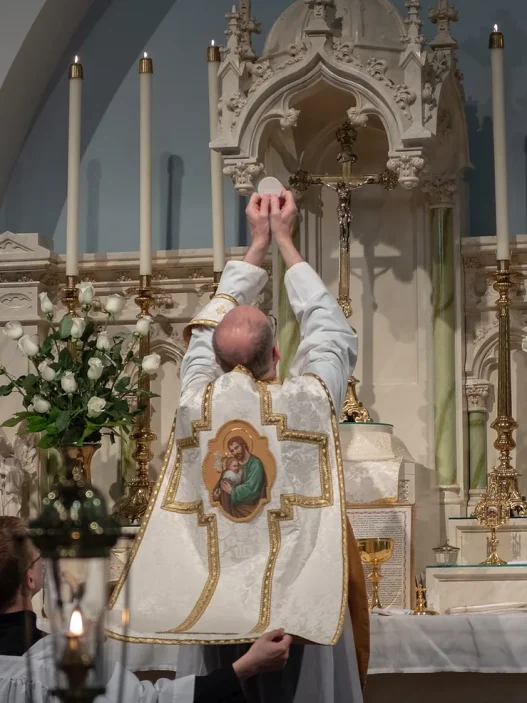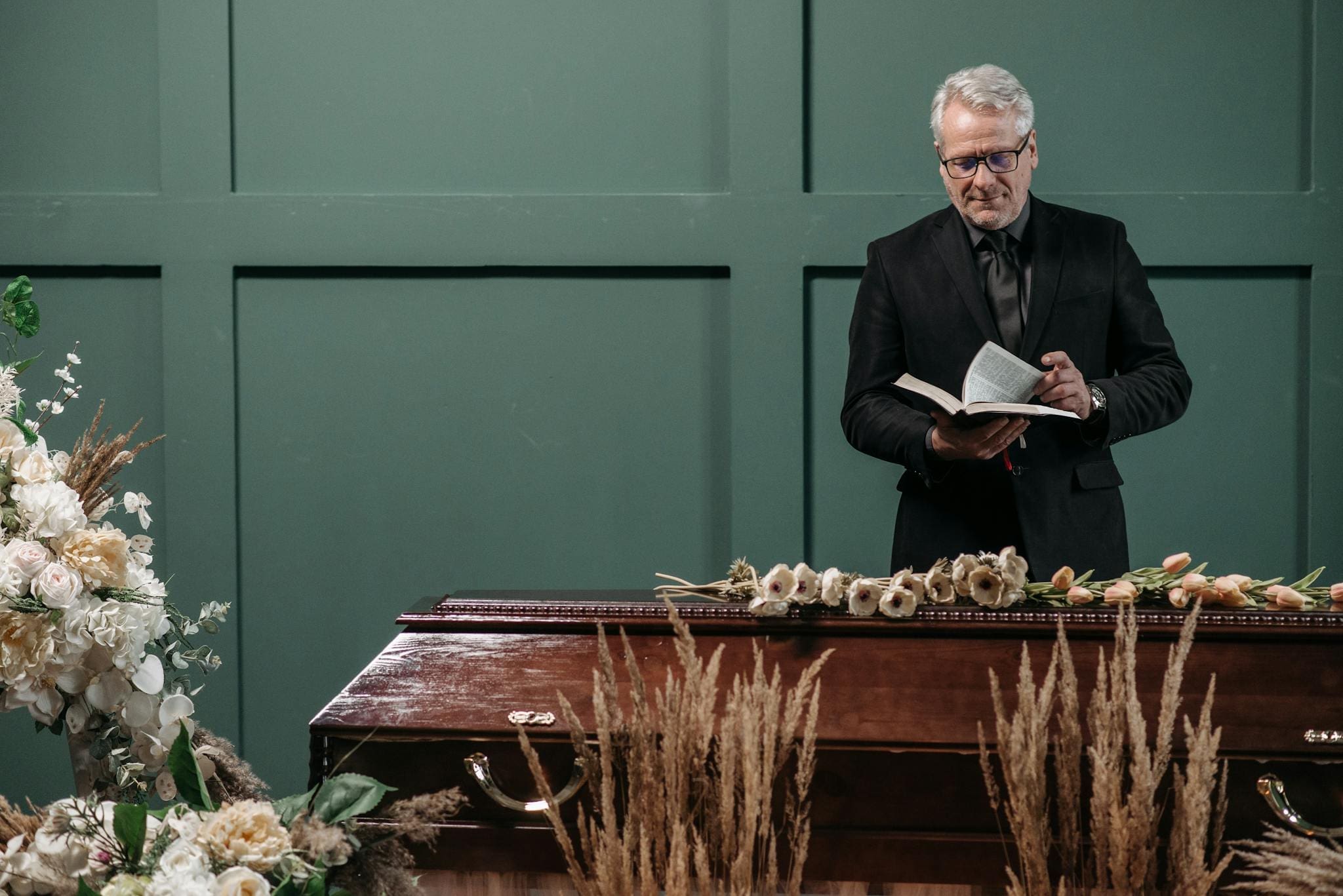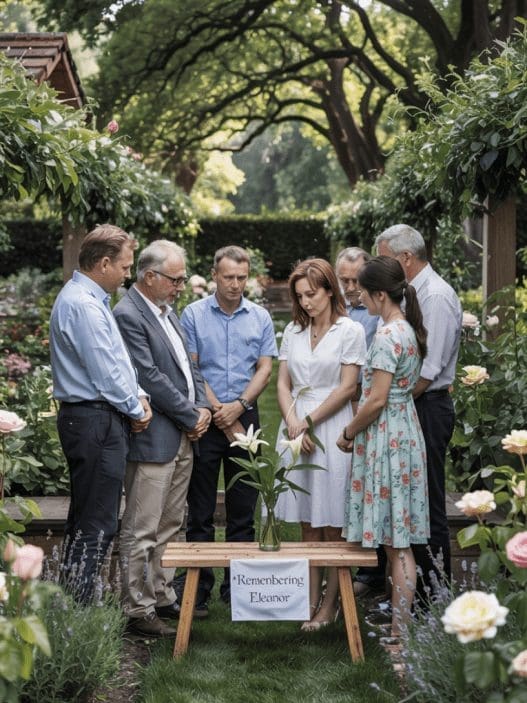A funeral wake is a deeply significant event that allows family, friends, and the community to gather, mourn, and celebrate the life of a loved one who has passed.
Rooted in history, cultural tradition, and evolving practices, a wake serves as a space for sharing memories, offering support to the bereaved, and finding closure. In this guide, we explore everything you need to know about planning and attending a wake, including traditional customs, modern practices, religious considerations, and proper etiquette. Whether you’re planning a wake or attending one, this article will provide you with valuable insights.
What Is a Funeral Wake?
A funeral wake is a gathering that takes place either before or after a funeral service. Traditionally, wakes were held at the home of the deceased and involved keeping vigil over the body. Today, however, wakes are more commonly social gatherings held in various venues such as homes, funeral homes, or rented spaces.
The purpose of a wake is to give family and friends a chance to express their grief, offer condolences to the bereaved family, and share stories about the person who has passed away.
While modern wakes may no longer involve overnight vigils or formal prayers, they remain an essential part of many cultural and religious traditions, providing a space for collective mourning and reflection.
The Historical Origins of Wakes
The concept of a wake has its origins in ancient customs. The word “wake” itself derives from the Old English “wacan,” meaning “to wake” or “to keep watch.” Historically, wakes were held in the home of the deceased, where family members and friends would gather to keep watch over the body for several days and nights before burial. This vigil was often accompanied by prayers, storytelling, and ritual mourning.
In Ireland, the tradition of the wake is particularly notable. Irish wakes were both somber and celebratory, with mourners gathering for an extended period to pray, weep, share food and drink, and recount stories of the deceased’s life. This blending of grief and celebration continues to influence the way wakes are conducted today, with many families choosing to celebrate the life of their loved one alongside their mourning.
Planning a Funeral Wake: Key Steps and Considerations
Planning a wake involves several important decisions, ranging from choosing a venue to organizing food, drinks, and memorial activities. Below is a detailed breakdown of the key steps involved in organizing a meaningful and respectful funeral wake.
1. Choosing the Right Venue for the Wake
The first major decision when planning a wake is selecting an appropriate venue. While wakes were traditionally held in the home of the deceased, modern wakes can take place in various settings depending on the family’s preferences and the number of attendees.
Common Venue Options:
- Family Home: This setting offers intimacy and a personal touch, allowing for a familiar environment where mourners can gather.
- Funeral Home: Many funeral homes offer dedicated spaces for wakes, often providing catering and logistical support.
- Community Halls or Function Rooms: Hotels, pubs, and community centers often have rooms available for hire that can accommodate larger groups.
- Religious Institutions: Some churches or synagogues offer spaces for wakes, especially if the deceased was an active member of the congregation.
Factors to Consider:
- Capacity: Ensure the venue can comfortably accommodate all expected guests.
- Accessibility: Consider the needs of elderly or disabled attendees, ensuring the venue is easy to access.
- Atmosphere: Decide whether the wake should be formal or casual, and choose a space that reflects this tone.
2. Deciding on Catering and Refreshments
Providing food and drinks is a traditional element of most wakes. Catering not only gives attendees an opportunity to share a meal together, but also allows them to relax, reflect, and connect in an informal setting.
Catering Options:
- Light Refreshments: Tea, coffee, sandwiches, and pastries are often served, particularly at more informal wakes.
- Buffet-Style Catering: A more substantial meal may be provided, especially if the wake is held over a longer period. Options may include cold meats, salads, bread, and desserts.
- Potluck-Style: In some cultures and communities, guests bring their own dishes, contributing to a communal meal.
- Alcohol: Depending on personal and cultural preferences, alcohol may be served. For instance, Irish wakes are traditionally known for including whiskey or beer.
Tips for Catering:
- Consider Dietary Needs: Ensure there are vegetarian, vegan, and allergy-friendly options available.
- Keep it Simple: While some families may opt for elaborate spreads, a simple selection of food is often appropriate, especially for smaller gatherings.
- Timing: Plan the catering around the wake’s timeline. If the wake is held immediately after a funeral service, guests may appreciate a light meal.
3. Setting the Wake’s Timeline
The duration and schedule of a wake can vary based on the family’s preferences and the customs of the culture or religion involved. Generally, wakes last between two and four hours, though some may extend longer, especially if the wake is held the evening before the funeral.
Example Timeline for a Funeral Wake:
- Arrival of Guests: Attendees arrive and offer condolences to the bereaved family.
- Opening Remarks: A family member or close friend may say a few words to welcome guests and begin the wake.
- Viewing of the Body (Optional): If the wake is held before the funeral, the body may be present for a viewing.
- Sharing Memories: Guests may be invited to share stories or memories of the deceased. Some families may create a memory book or photo slideshow to encourage reflection.
- Refreshments: Food and drinks are served during or after the memory-sharing session.
- Closing Remarks: The wake may conclude with a prayer, song, or another meaningful gesture, after which guests may leave at their own pace.
4. Personalizing the Wake: Incorporating Unique Touches
A wake offers a valuable opportunity to celebrate the unique personality and life of the deceased. By adding personal touches, families can create a meaningful and memorable experience for all attendees.
Ideas for Personalizing a Wake:
- Photos and Mementos: Displaying photo albums, memorabilia, or favorite possessions of the deceased can help create a warm and reflective atmosphere.
- Music: Playing the deceased’s favorite music or songs that hold special significance can add an emotional and personal dimension to the event.
- Memory Tables: Set up a table where guests can leave notes, flowers, or other symbolic items in memory of the deceased.
- Tribute Videos: A slideshow or video montage of the deceased’s life can provide a powerful tribute, especially if accompanied by meaningful music.
- Storytelling: Encourage guests to share stories, anecdotes, or words of remembrance, either through an open mic session or by writing messages in a memory book.
Understanding Funeral Wake Etiquette: What to Know as a Guest

Attending a wake can feel unfamiliar or uncomfortable if you’re unsure of the customs or expectations. Below is a guide to appropriate wake etiquette, helping you navigate the event with sensitivity and respect.
1. Appropriate Dress Code
The dress code for a wake is generally similar to that of a funeral. While attire can vary based on cultural or religious customs, it’s best to dress conservatively in dark, muted colors such as black, navy, or grey. Avoid bright or flashy clothing, unless the family specifically requests a different style of dress to reflect the personality of the deceased.
Clothing Considerations:
- Men: Dark suits or slacks with a collared shirt and tie are typical.
- Women: Dark dresses, skirts, or slacks paired with a modest blouse or sweater are common choices.
- Cultural Exceptions: In some cultures, bright colors or white clothing may be appropriate to symbolize celebration rather than mourning.
2. Offering Condolences
One of the most important aspects of attending a wake is offering condolences to the family of the deceased. This can be as simple as expressing sympathy or sharing a brief memory of the deceased. It’s important to keep your words heartfelt but concise, as the family may have many guests to greet.
Examples of What to Say:
- “I’m so sorry for your loss.”
- “Your [mother/father/relative] was a wonderful person, and they will be missed.”
- “I remember when [the deceased] and I…”
It’s also appropriate to offer physical gestures of support, such as a handshake or a hug, depending on the family’s comfort level.
3. Participating in Wake Activities
Depending on the type of wake, you may be invited to participate in various activities such as sharing a story, looking through photo albums, or contributing to a memory book. Even if you do not speak publicly, you can still offer your support by listening to others and engaging in quiet reflection.
Things to Keep in Mind:
- Respect the Tone: Some wakes may be solemn, while others may have a more celebratory tone. Be mindful of the family’s preferences and follow their lead.
- Be Supportive: Offering your presence, a kind word, or a listening ear can go a long way in providing comfort to the bereaved.
How Funeral Wakes Vary Across Cultures and Religions
Wakes are a tradition in many cultures and religions, but the customs surrounding them can vary widely. Below are some examples of how wakes are conducted in different religious and cultural contexts.
1. Christian Wakes
In many Christian traditions, wakes are held as a way to gather before the funeral service. The body may be present in a coffin, and prayers or religious readings may be recited. Christian wakes can be formal or informal depending on the family’s preferences, with an emphasis on offering support to the bereaved and reflecting on the deceased’s life.
Catholic Wakes:
Catholic wakes are often held the evening before the funeral Mass. Prayers, rosaries, and hymns may be part of the wake, and a priest may be present to offer blessings.
2. Irish Wakes
Irish wakes are perhaps the most well-known for blending both mourning and celebration. Traditionally, the body of the deceased is laid out in the family home, where friends, neighbors, and relatives gather to pray, share stories, and offer condolences. Food and drink, including alcohol, are often provided, and music or singing may be part of the event.
The wake may last several days, culminating in the funeral Mass.
If an Irish wake is taking place then the funeral notice will usually say “lying in repose at..”
Wakes often go on until the early hours with plenty of songs and sharing of stories. It is common for somebody to sit with the body at all times.
It is common that there will be an open casket.
3. Hindu Wakes
In Hindu tradition, wakes are often marked by rituals and prayers aimed at helping the soul in its journey to the afterlife. Incense, chanting, and offerings to deities are part of the wake, and the body is typically cremated within 24 hours of death. After the cremation, a wake-like gathering may be held where the family receives visitors and guests offer condolences.
4. Buddhist Wakes
Buddhist wakes emphasize meditation and prayer, with the belief that the soul undergoes a process of rebirth. The wake may involve chanting by monks or family members, and offerings of food, flowers, or candles are often made to honor the deceased. Family and guests meditate or reflect quietly on the life and virtues of the deceased.
Practical Tips for Organizing a Meaningful Funeral Wake
Organizing a wake requires thoughtful planning to ensure the event honors the deceased while providing comfort and support to attendees. Below are some practical tips to help guide the process.
1. Set a Budget
Wakes can vary widely in terms of cost, depending on the venue, catering, and number of guests. It’s important to establish a budget early on and make decisions that align with the family’s financial resources. Keep in mind that wakes can be simple, heartfelt gatherings without requiring elaborate expenses.
2. Delegate Responsibilities
Organizing a wake can be emotionally and physically draining for the bereaved family. It’s helpful to delegate tasks such as coordinating the venue, arranging catering, and sending invitations to trusted family members or friends. This allows the immediate family to focus on grieving and receiving support from loved ones.
3. Create a Memory Table or Area
A dedicated memory area where guests can leave notes, photos, or personal tributes to the deceased adds a meaningful element to the wake. This can also serve as a quiet space for reflection during the event.
4. Consider Digital Participation
For guests who are unable to attend the wake in person due to distance or other constraints, consider setting up a virtual option. This can be as simple as live-streaming the wake or creating a digital memory board where attendees can leave messages or tributes online.
5. Incorporate Cultural or Religious Customs
If the deceased was part of a particular religious or cultural tradition, incorporating relevant customs can help make the wake feel more meaningful and authentic. This might include specific prayers, rituals, or symbolic acts that reflect the beliefs of the deceased and their family.
The Importance of a Well-Planned Funeral Wake
A funeral wake serves as a vital space for mourning, remembrance, and celebration of a loved one’s life. Whether grounded in cultural tradition or adapted to modern preferences, the wake provides an opportunity for the community to come together, support the bereaved, and honor the memory of the deceased.
By carefully considering the venue, catering, timeline, and personal touches, you can organize a wake that truly reflects the spirit and personality of the person who has passed. Through thoughtful planning and attention to detail, the wake becomes more than just an event—it becomes a meaningful and lasting tribute to a life well-lived.





















I\’m so glad I found your site. Your posts are consistently excellent.
I\’m truly grateful for your support. Your positive feedback keeps me motivated.
Your content is a go-to source for me when I need information. Great work, as always!
Your dedication to providing quality content is truly admirable. I\’m a fan of your work.